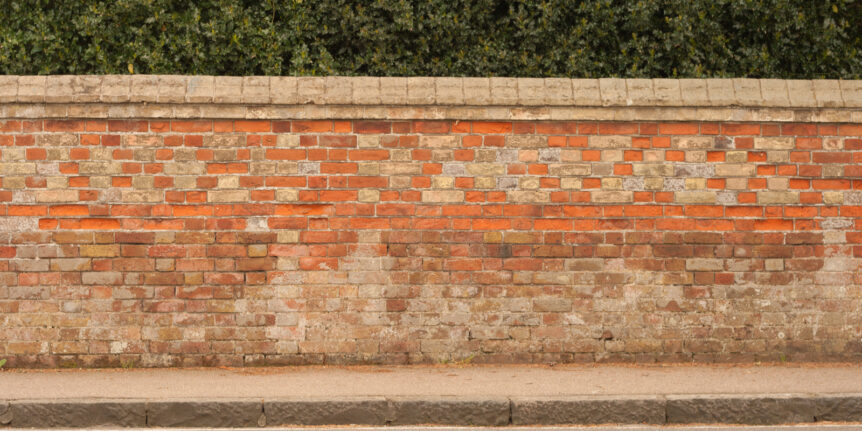White substance on bricks? Finding white stuff on bricks is a common problem in Toronto known as efflorescence. The word has French origins that mean “to flower out.”
So, what causes efflorescence? Bricks are naturally porous, which means they absorb moisture and then release this moisture in the form of water vapor. While water can evaporate into the air, the salts and minerals in water cannot. Instead, these minerals stay left behind on the surface of masonry creating that white powdery appearance. This same process can occur on hats or clothing if you sweat a lot while wearing them. While the water dries out and releases into the air, the salts and minerals in sweat remain behind, leaving a white stain.
The worst thing about efflorescence is that it doesn’t look good. It doesn’t typically cause any issues, but it can be a sign of another underlying issue that does need to be addressed. In most cases, it indicates an overaccumulation of water in the masonry structure. Are sprinklers hitting the wall or brick walkway on a regular basis? Are the proper drainage systems in place? Could there be a leak inside the wall? These are all important things to consider if you are noticing efflorescence in certain areas and not others.
When is Efflorescence Most Common?
That white stuff on bricks is most common when the weather is cold and dry. That’s because this is a common time for buildings to dry out, releasing water but leaving behind salt and mineral deposits. Although it is more common in the winter when temperatures are lower, it can occur at any time of year.
The Many Faces of Efflorescence
Efflorescence can appear in many different ways. It might have sharp edges, or it might be less defined. It might look like powder or more like individual crystals. Some of these differences have to do with the types of salts present in the water. In addition, humidity levels, temperatures, and local rainfall patterns can play a role in the appearance of efflorescence.
If the water evaporates before it reaches the masonry surface, the efflorescence may accumulate beneath the surface and not be visible. If it is humid, there is a lot of moisture in the air, and it takes longer for the water in masonry structures to evaporate. As a result, efflorescence may build up slower in smaller whisker-like patterns.
Efflorescence is usually white, but it can also be shades of yellow or brown.
Mold Vs. Efflorescence
We get a lot of calls from concerned homeowners who are worried that they have mold on their bricks. They are always pleased when they find out it is just efflorescence. There are several things you can do to help determine if you are looking at mold or efflorescence. For one, if you pinch efflorescence between your fingers you’ll find it turns into a powder, while mold does not. You can remove efflorescence using water, but you cannot remove mold using water.
Why is Efflorescence in an Inspection Report?
Inspectors typically make note of white stuff on bricks because it signifies excess water, which can create a lot of different issues. In some cases, efflorescence is nothing to worry about, but if it is spreading out over vast areas, constantly reappearing or getting significantly worse, it’s important to address the issue because some type of water management issue is likely to blame.
Can You Remove Efflorescence?
Yes! There are many cleaning tactics out there that’ll allow you to remove efflorescence with relative ease. Although, if excess water is to blame, the issue is likely to return. Therefore, it’s equally important to find the cause of efflorescence and address it.

